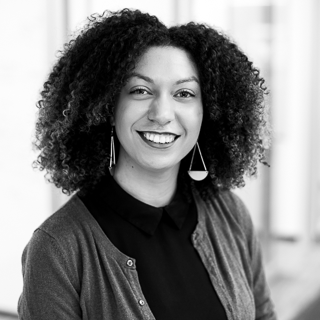Financial Resource List for BIPOC Young Adults

It’s time to level the playing field for Black, Indigenous, and people of color (BIPOC) youth.
To start, let’s look at four key areas needed for success and health — food, housing, mental health treatment, and financial education. These essentials are central to a young person’s development. But marginalized communities too often go without them.
Barriers to access can take many forms — racial, economic, systemic. Fortunately, a number of organizations have stepped in to provide resources where they’re needed.
Here are four hardships that BIPOC youths commonly face — and a comprehensive list to find assistance and learn more.
Food security
Food insecurity is a lack of access to affordable, nutritious food. And it has dire consequences for BIPOC communities. For instance, food deserts are areas with scarce options for affordable, healthy food. These areas are often part of poor, urban neighborhoods with a majority of BIPOC residents. The solution is more accessible and affordable nutritious foods.
Emergency Food Assistance Program (TEFAP)
TEFAP is a federal program that provides free emergency food assistance to low-income Americans.
Feeding America
Feeding America is a national nonprofit comprising more than 200 food banks dedicated to feeding the hungry via community-based distribution agencies. The website provides information about various food assistance programs, including the federal National School Lunch Program (NSLP). The NSLP provides free or reduced-price meals to school-age youths.
Food Distribution Program on Indian Reservations (FDPIR)
The Food Distribution Program on Indian Reservations (FDPIR) provides commodity foods — food the federal government purchases and distributes to support farm prices — to low-income Native American families. Recipients must reside on an Indian reservation or in a designated area nearby a reservation.
Supplemental Nutrition Assistance Program (SNAP)
SNAP is a federal program providing food-purchasing assistance to low-income and no-income people. Those in need are then able to purchase nutritious, healthy foods and work towards self-sufficiency.
United States Department of Agriculture (USDA)
The USDA website is a hub for information and resources about hunger and food security. It includes links to government and nongovernment organizations that provide assistance.
Housing access
At-risk communities rarely have control over their living situation, a result of multiple factors — a lack of affordable housing, low wages, and years of discrimination and segregation in housing policies. Increasing access to shelter is key to the safety and well-being of homeless or housing insecure youths.
John H. Chafee Foster Care Independence Program (CFCIP)
The CFCIP assists state organizations to help transition current and former foster care youth who are likely to remain in foster care until the age of 18. This program helps youths transition from foster care to independent living.
StandUp for Kids
StandUp for Kids is a national nonprofit committed to ending the cycle of youth homelessness. Their mission is to empower homeless and at-risk youth.
Mental health services
The failings of our health care system disproportionately affect BIPOC communities. Further, youths are often most at-risk for poor mental health outcomes due to socioeconomic disadvantages and minority or immigrant status. These organizations are changing that.
The Asian Mental Health Project
The Asian Mental Health Project is dedicated to removing the fear and guilt associated with mental illness from Asian communities. The organization increases conversations about mental health and provides resources and information about treatment.
Inclusive Therapists
Inclusive Therapists is a healing space that welcomes individuals from a wide range of backgrounds. Created by Melody Li, a licensed marriage and family therapist, the organization’s core values are transparency and inclusivity.
Loveland Foundation
The Loveland Foundation provides mental health resources to communities of color, with a focus on Black women and girls. The organization’s resources prioritize opportunity, access, validation, and healing.
Mental Health America (MHA)
A community-based nonprofit, MHA addresses the mental health needs of all Americans living with mental illness.
National Queer and Trans Therapists of Color Network (NQTTCN)
NQTTCN is an organization that prioritizes the mental health of queer and trans people of color (QTPOC). The organization integrates healing justice into the intersectional spaces of social justice and mental health.
Therapy for Latinx
Therapy for Latinx connects members of the Latinx community with therapists, life coaches, and emergency mental health centers. The resource also includes information about free or low-cost community clinics.
Financial education
Too often a lack of exposure to financial principles at a young age leads to risky financial decisions and behaviors later on in life. Inclusive and accessible financial education for BIPOC communities is necessary to increase financial health for all.
Dare to Dream Financial Planning
Dare to Dream was founded by Anna N’Jie-Konte, a certified financial planner, in order to increase financial resources to communities of color. N’Jie-Konte’s financial planning strategies focus on BIWOC (Black, Indigenous, Women of Color).
The Fiscal Femme
The Fiscal Femme believes that financial well-being must include equality. Founded by Ashley Feinstein Gerstley, the Fiscal Femme provides comprehensive programming that is inclusive for womxn and BIPOC individuals.
Jump$tart Coalition
The Jump$tart Coalition raises awareness about financial literacy and financial education to youths, educators, and legislators. The organization created national standards for K-12 personal financial education and provides a wealth of resources for students and educators.
Junior Achievement (JA)
JA is a K-12 program fostering financial literacy, entrepreneurship, and work-readiness. JA provides educational resources, including experiential programs and events.
Bottom line
Increasing the affordability and accessibility to key social determinants of success, we can create a more equitable path for BIPOC young adults. These resources are a great way to start.




